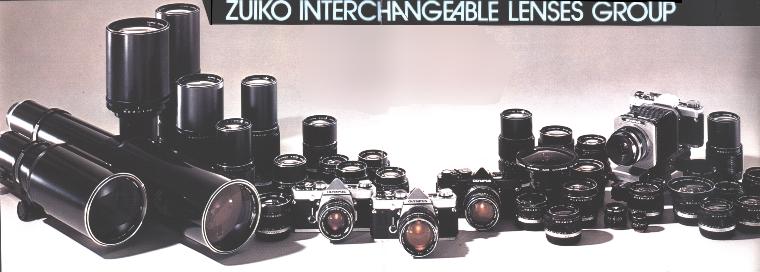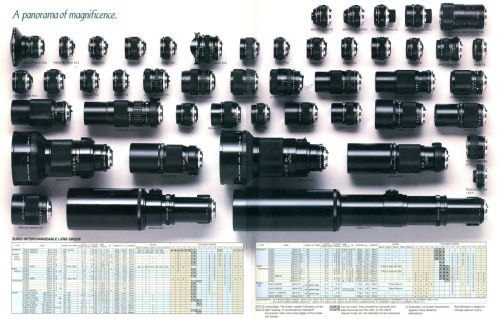
Lens Group
Lens Group Main Features Table A
table showing the main features of all lenses at a glance!
Zuiko lens terminology What does
'F.Zuiko' mean? How can I tell if my lens is multicoated? This page tells it all.
Lens version notes
The data presented here mainly originates from the Olympus Sales Information
File, release October 1979, and The OM System Lens Handbook, release October
1985. Several units in the Lens Group however were slightly changed in design since
they were first released. Some lenses were completely replaced (the 28mm/F3.5 was replaced
by the 28mm/F2.8, the 55mm/F1.2 was replaced by the 50mm/F1.2, and the Manual Macro lenses
were replaced by Auto Macro lenses). Other lenses were internally redesigned, like the
50mm/F1.8 that came at least in five different versions, including a change from 6 element
in 5 groups design to a 6 element in 4 groups design, or the 85mm/F2 that was
changed from a 6 element in 4 groups design to a 5 element in 4 groups design and the
18mm/F3.5 that was changed from 12 elements in 10 groups into 11 elements in 9 groups. The
dimensions and weight of other lenses was also changed. All single-coated lenses were
replaced by multicoated lenses. Also, the hoods were redesigned from pure metal hoods to
rubber hoods with metal ring to all rubber hoods.
So you can expect variations in design, dimensions, weight, inscriptions and hood
specifications. For those lenses where newer data is available, it is put in between [brackets].
The specifications for the compatible focusing screens only name
the "1" series focusing screens since the "2" series did not exist at
that time. However every lens that can be used with a 1-4 screen can also be used with a
2-4 screen, and every lens that can be used with a 1-13 screen can also be used with a
2-13 screen.
Zuiko Lenses that were never marketed
Notice anything strange in the early 1973 Lens Group Picture below? Two of the four
standing super tele photo lenses, are not incorporated in the table above. From left to
right, there are the 600mm/F6.3, 1000mm/F11, both lying, and standing: the 400mm/F4.5,
400mm/F6.3, 300mm/F4.5, 300mm/F6.3 with the 200mm/F4 in front of the last two lenses.
What did you say? 400mm/F4.5? 300mm/F6.3? Meet The Zuiko Lenses That Never Made It.

 |
Lens Poster "A panorama of magnificence" Click on the image on the left to download this huge
lens poster, which is a high resolution scan (300 DPI, 4966 x 3177
pixels, 3Mb .jpg file) of all lenses available in 1983. |